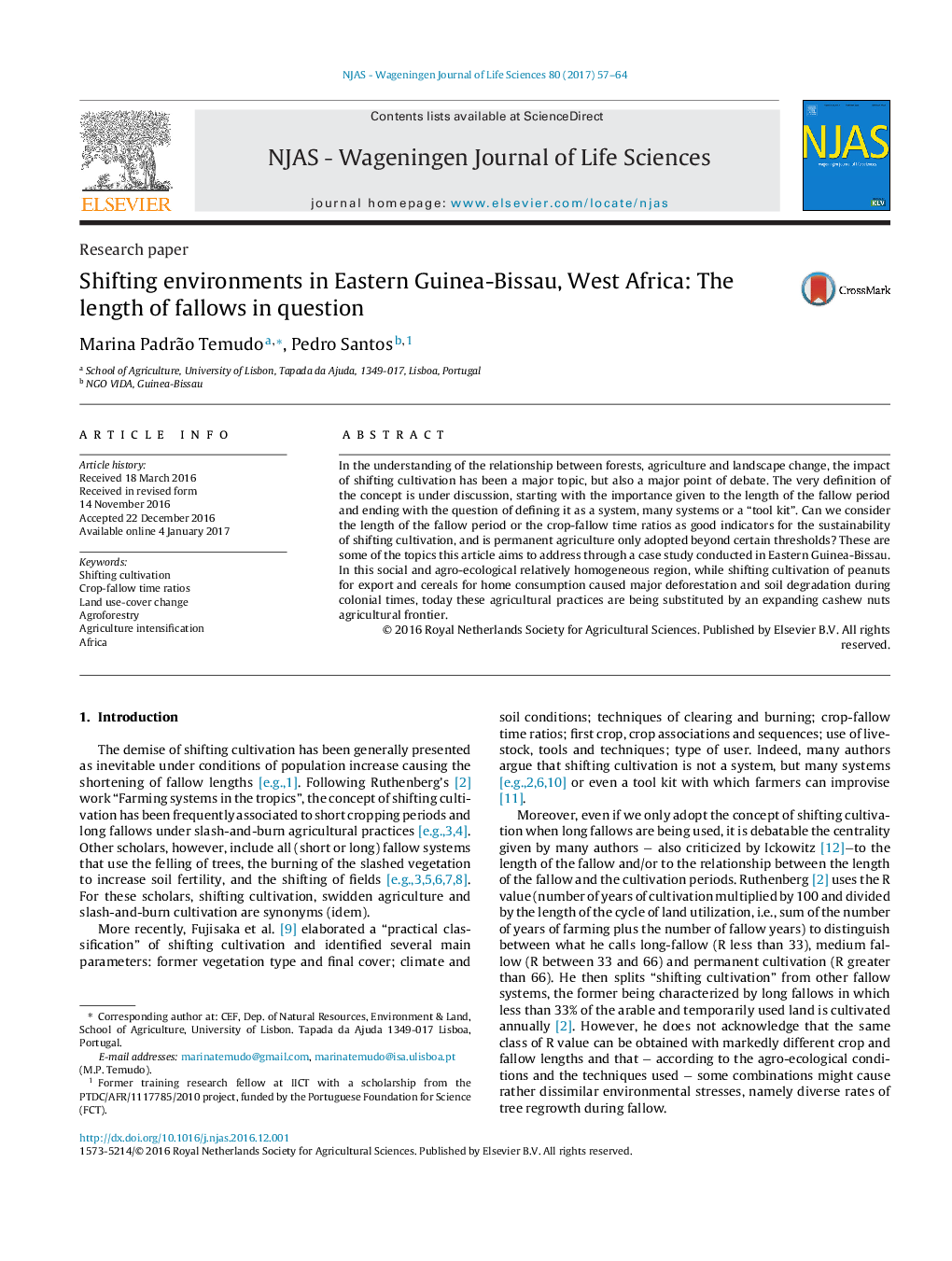| Article ID | Journal | Published Year | Pages | File Type |
|---|---|---|---|---|
| 5760537 | NJAS - Wageningen Journal of Life Sciences | 2017 | 8 Pages |
Abstract
In the understanding of the relationship between forests, agriculture and landscape change, the impact of shifting cultivation has been a major topic, but also a major point of debate. The very definition of the concept is under discussion, starting with the importance given to the length of the fallow period and ending with the question of defining it as a system, many systems or a “tool kit”. Can we consider the length of the fallow period or the crop-fallow time ratios as good indicators for the sustainability of shifting cultivation, and is permanent agriculture only adopted beyond certain thresholds? These are some of the topics this article aims to address through a case study conducted in Eastern Guinea-Bissau. In this social and agro-ecological relatively homogeneous region, while shifting cultivation of peanuts for export and cereals for home consumption caused major deforestation and soil degradation during colonial times, today these agricultural practices are being substituted by an expanding cashew nuts agricultural frontier.
Related Topics
Life Sciences
Agricultural and Biological Sciences
Agricultural and Biological Sciences (General)
Authors
Marina Padrão Temudo, Pedro Santos,
